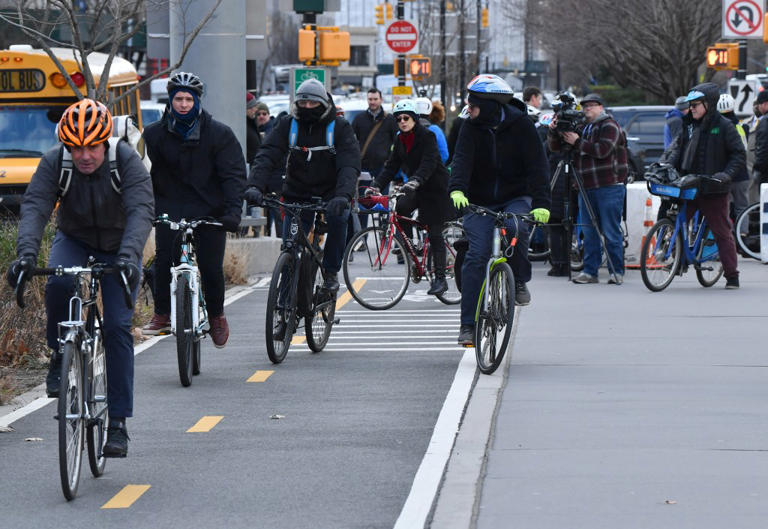Congestion pricing will leave NYC in a jam
I never thought I’d side with the teachers’ and municipal unions over anything.
But I stand with them — and with the Broadway Association, upstate and New Jersey legislators, Lower East Side residents, small business owners, taxi drivers and almost everybody in Staten Island — to fight new congestion pricing measures, which the MTA wants to ram down our throats, and long-suffering streets, this spring.
If parts of town seem more gridlocked and filled with frustrated horn-honking than they once did, it isn’t because there are more Ubers.
It’s because three successive mayors — Michael Bloomberg, Bill de Blasio and Eric Adams — made them that way.
Driving in Manhattan was never a picnic, but the Department of Transportation, which serves as the muscle arm of the bike lobby, made it more of an ordeal for drivers than before — and in the process gave the MTA a plausible-seeming pretext for its scheme.
The only way to decongest street vehicular traffic is to get rid of the destructive, politics-driven measures now in place which guarantee congestion.
Forget learned urbanologists’ data for or against congestion tolls.
I’ll go by my 50 years of living here where I’ve known and used every form of transit in good times and bad.
The hell-on-wheels started long before I sold my car seven years ago when I finally had enough of the city-imposed horror of driving in Manhattan.
(Note to bike-lobby crazies: I’m a walker and subway rider who used my 24-year-old Toyota, with a mere 30,000 miles, only on occasion).
When traffic lights are de-synchronized as they are on Third Avenue in the 30s and 40s, a once speedy trip uptown is a harrowing, horn-honking ordeal.
Duh.
When entire streets are made off-limits to autos — e.g., Broadway in Times Square — it’s no surprise that traffic jams pop up on the avenues and streets they must use to get around the closures.
Double and triple duh.
All those came before the final blow to drivers’ sanity and patience — 10,000 dining sheds built in roadways during the COVID-19 crisis.
They made navigating certain streets an even worse, sweat-breaking ordeal for drivers careful not to spoil diners’ meals.
It’s irresponsible, if not criminal, to inflict congestion pricing — with all its unpredictable consequences — on the city’s DNA when it’s yet to fully recover from the pandemic.
While the MTA sees a pot of gold from workers who theoretically will switch to mass transit rather than pay $15 just to drive into Manhattan below 60th Street, it’s as likely that the tolls will prompt more of them to work from home — a reversal which we can’t afford of the slow-but-steady back-to-offices trend.
Ah, but congestion pricing worked in London, right?
Nope.
It was launched there in 2003.
Yet central London was just as clogged on my recent visits as it was when I first visited in 1980.
More to the point for New York: London’s office market is less at risk than ours.
It’s barely half the size of the Big Apple’s half-billion square feet — which are the heartbeat of our economy.
MTA chairman Janno Lieber surely knows what’s at stake.
He was a commercial real estate leader who ably steered Larry Silverstein’s years-long quest to build new towers at the World Trade Center.
But Lieber has a different job now: to fund $15 billion in bonds to be used to pay for transit upgrades.
The scheme to “solve” a crisis that’s of the government’s own making by charging drivers through the nose belongs to the “Let’s create a problem so we can make money fixing it” school of business strategy.
In Mario Puzo’s novel “The Godfather,” one mob family overloaded trucks it owned, and then made more money off highway repairs after the trucks tore them up.
The MTA is controlled by the state, not the city.
But the parallel holds.
Congestion pricing is an offer we can, and must, refuse.
scuozzo@nypost.com





